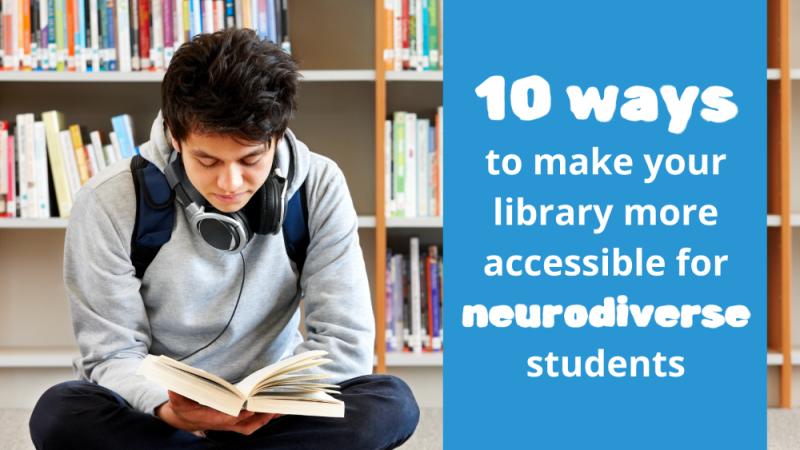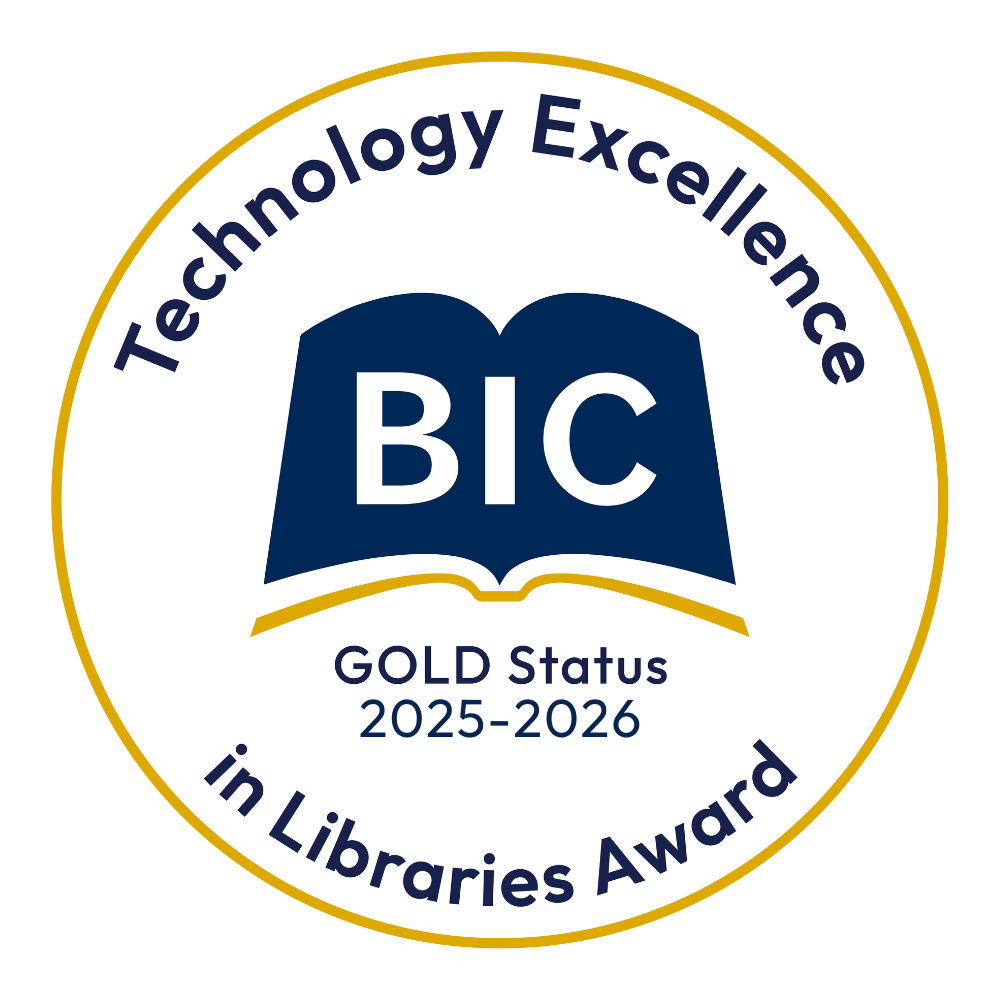For help, advice and telephone ordering call our team on 0121 666 6646
Are you sure you wish to delete this basket?()
This action cannot be undone.
Sorry, something went wrong
Please report the problem here.
10 ways to make your library more accessible to neurodiverse students

July 3rd 2024
As a ‘third space’, the library is often very valuable to neurodivergent students. It is a place to unmask and relax within the school environment. Increasing the accessibility of your library can benefit these regular visitors, as well as encourage other neurodiverse teenagers to enjoy the school library. Natalie from our Schools Team shares 10 ways you can improve the accessibility of your library with neurodiverse needs in mind.
Make library information clear and direct
1. Put up signs to direct students around the library so they know where to check out or return books or where they can use a computer. Images as well as words will help.
2. Try to give as much as notice as possible if you have to make changes to how the library runs (e.g. the library has to close one lunchtime for a meeting). Again, provide information signs: in this example, post signs as to when the library will be open again. For many students, the library is a safe space, and not having access to it when they think they will may be distressing.
Use online access to your advantage
3. Promote the tasks you can do online via your library catalogue, such as renewals or reservations, so that students can do these remotely. This not only reduces the need for interaction for students who find this difficult, but provides them with a way of looking things up in their own time. This will give them space to process the information.
4. Create a ‘walk-through story’ of how to use the library. A good example can be found here. It would also be useful to include photos of the library staff or student librarians, so students know who they can talk to if they need help.
Create a welcoming environment within your library design
5. Consider lighting. Do you have to use overhead strip lighting? Could lamps or fairy lights be used (at least during quiet reading sessions) to reduce the sensory impact?
6. Identify any noise issues in the library. This could be buzzing computer monitors, chatting from nearby classrooms, or hard floors that reflect noise. Is there anything you can do to mitigate this?
7. Create social and private reading areas. If you are able to provide a separate room for those experiencing sensory overload, that would be ideal, but space often does not permit this. Instead, is there a childrens reading corner that could be made ‘softer’ with bean bag seating, sensory cushions lower lighting and partitioning to reduce noise?
8. Provide sensory accessories such as a selection of fidget toys, lego, and coloured overlays for students to use, if budget allows. Sensory furniture such as touch tag carry cushions or UV reflective beanbags offer students similar tactile and visual stimulation and are ideal for those quieter library corners or sensory rooms.
Tips from our designers: accessible and user-friendly designWhen designing secondary school libraries, we always consider accessibility and how an interior can be made as user-friendly as possible to accommodate diverse and changing needs. For example, some students may prefer open spaces to read seated on the floor, while some may prefer privacy to independently read in cosy reading nooks. You can create dynamic spaces for your students by zoning your library layout for several different functions: group reading, independent reading, table-work, 1-to-1 areas, etc. A library for schools should also focus on comfort and wellbeing of its users, accommodating to sensitivities. When choosing colour schemes for our designs, we always recommend a calming, complementary colour palette to create a focused atmosphere, perfect for reading. To add depth and interest to the space, you can incorporate textured surfaces in upholstered seating, soft rugs, or tactile cushions, which enhance the feeling of comfort for its users, without overstimulating the senses. Even if you wish to add colour, do not forget that as soon as you display your book stock, this will add further visual interest which should be considered in your library colour scheme. - Helena, Senior Interior Designer |
Shelve books your students relate to
9. Set up a ‘shelf help’ section with health and wellbeing titles which students can access. This makes titles easier for students to access without having to ask. It also helps to counteract misinformation that students may pick up from other sources.
10. Provide disability positive books. This is probably the most important step in making all students feel welcome in the library. Ensure you have books with nuanced, multidimensional, and neurodivergent characters which students see themselves in.
Start your search for young adult books with neurodivergent protagonists:
Ultimately, your relationships with the students is the most important element in making everyone feel comfortable in the library. Remember, many of these additions will help all pupils, not just those who are neurodivergent. By creating an 'easy' space, without judgements, all students will be able to access the benefits of visiting their school library. |
Supporting special schools and mainstream schools with SEND provision
If you are looking for further support with increasing accessibility in your school library, we can help. From books to interior design, our bespoke service caters for and supports your children and young people with promoting their literacy levels and development.
|
|
Read next:Transition tips: a smooth switch from KS3 to GCSE |
|
 |












